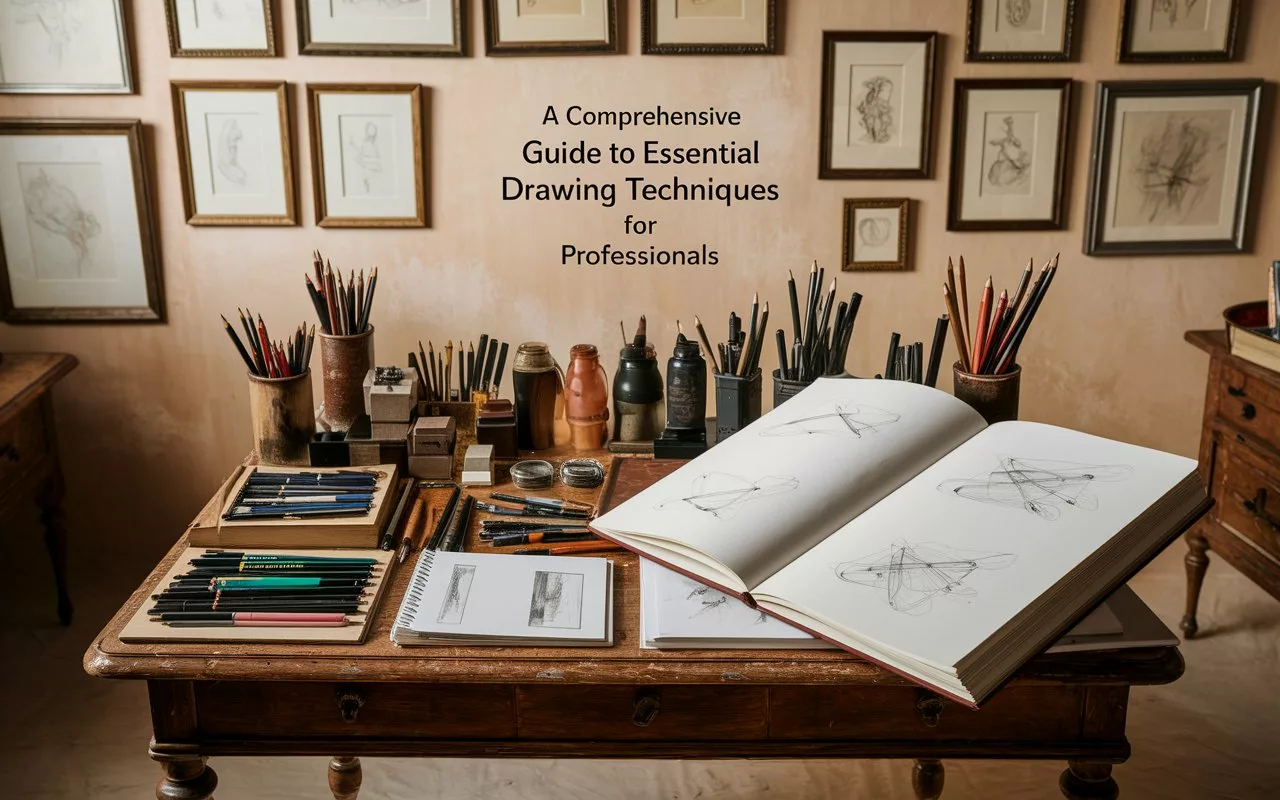Guide to Essential Drawing Techniques for Professionals
1. Advanced Shading Techniques
Shading brings realism and depth to drawings, and professionals use:
- Gradient Shading for smooth tonal transitions.
- Stippling to create shadows using tiny dots.
- Reverse Shading by highlighting on a dark background.
2. Pencil Rendering Mastery
Professional artists use:
- Different graphite grades (HB, 2B, 6B, 8B) for precision.
- Monochrome Drawing to enhance contrast.
- Pressure Control for varied texture effects.
3. Ink Drawing Mastery
Ink is used for detailed and expressive artworks, with techniques such as:
- Fine Line Drawing for intricate details.
- Ink Wash for watercolor-like effects.
- Cross-Hatching for geometric shading.
4. Oil Painting Techniques
Oil paints are known for their rich texture and deep colors. Key techniques include:
- Impasto for textured surfaces.
- Glazing for layered color depth.
- Pointillism for stunning visual effects.
5. Acrylic Painting Techniques
Acrylics dry quickly, allowing for versatile applications such as:
- Dry Brush Technique for rough textures.
- Wet-on-Dry for sharp details.
- Splattering & Dripping for abstract expression.
6. Watercolor Painting Techniques
Watercolors require control and fluidity, using methods like:
- Wet-on-Wet for seamless gradients.
- Water Control for directing color flow.
- Lifting Technique to create highlights.
7. Digital Art Techniques
Modern artists embrace digital tools to enhance creativity, using:
- Layering for structured compositions.
- Realistic Lighting & Shadows for depth.
- Custom Brushes for intricate details.
8. 3D Drawing Techniques
Creating depth and realism in drawings involves:
- Linear Perspective for depth illusion.
- Hyperrealistic Shading for realism.
- Optical Illusions to captivate viewers.
9. Abstract Art Techniques
Abstract art focuses on expression and experimentation, including:
- Gestural Drawing for dynamic strokes.
- Color Blending for surreal effects.
- Jackson Pollock Dripping Style for controlled chaos.
10. Conclusion: How to Improve Your Art?
To master your artistic skills, focus on:
- Practicing different techniques.
- Studying great artists.
- Experimenting with new styles.
Mastering drawing techniques unlocks limitless creativity start now and keep evolving!

